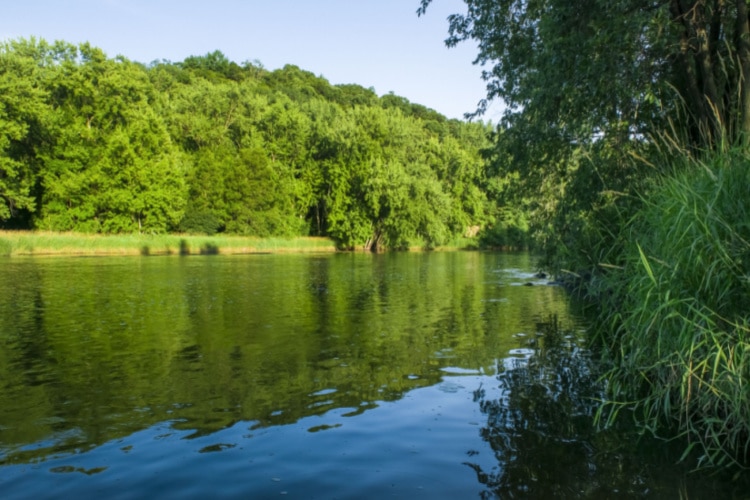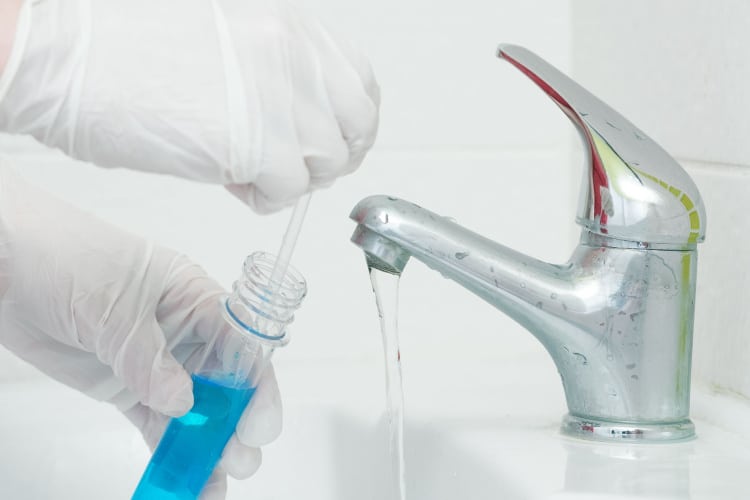If you live in Seattle, you may find yourself wondering whether the water from your tap is drinkable. Is it of high quality? Is it better or worse than other states/cities in the United States?
The short answer is — the water in Seattle is safe to drink and is of higher quality than the water in most other cities in the United States.
Seattle Water Quality Report: What is in the Water?
| Contaminant | Seattle levels | EPA action limit | EPA’s public health goal |
|---|---|---|---|
| Radium | 0 to 1.69 ppb | 5 ppb | Zero |
| Fluoride | 0.6 to 0.8 ppm | 2 ppm | 1 ppm |
| Total trihalomethanes | 20 to 63 ppb | 80 ppb | Zero |
| Arsenic | 0.23 to 0.52 ppb | 10 ppb | Zero |
| Bromate | 0 to 9 ppb | 10 ppb | Zero |
| Total haloacetic acids | 15 to 60 ppb | 60 ppb | Zero |
The tap water in Seattle has fewer contaminants than in other cities. For instance, while in cities such as San Francisco and Portland, lead is still a problem due to old plumbing components, there’s no such problem in Seattle.
However, according to the latest water quality report, the treated water of the city’s two water sources, Cedar River and Tolt River, still bears some hazardous impurities. The most prominent contaminants are arsenic, total trihalomethanes (TTHMs), haloacetic acids (HAA5), radium, bromate, and fluoride.
The Environmental Protection Agency (EPA) sets standards for all these contaminants under the National Primary Drinking Water Regulations (NPDWRs).
NPDWRs have two standards: action limit and public health goal. While the former informs about the safety of the water, the latter is set to eliminate any potential risks.
- Arsenic presence in Seattle’s water results from dissolved solids originating from natural deposits. Although its levels in Seattle water (0.23 to 0.52 ppb) are well below the EPA action limit of 10 ppb, the public health regarding this heavy metal is 0 ppb, so, if you live in seattle you should consider purchasing a water filter for arsenic removal to reduce arsenic in your water.
- TTHMs and HAA5 are disinfection byproducts, with levels 20 to 63 ppb and 15 to 60 ppb in Seattle. The EPA action limits for them are 80 ppb and 60 ppb, respectively, but the agency’s public health goal is 0 ppb.
- Even though the actual presence of radium (0 to 1.69 ppb) and bromate (0 to 9 ppb, only in Tolt River) are below the action levels (5 ppb and 10 ppb, respectively), the EPA public health goal for both is 0 ppb.
- Fluoride is pumped into water supplies by municipal authorities for teeth health all across the United States. Its levels (0.6 to 0.8 ppm in Seattle) rarely exceed the action level (2 ppm) or the public health goal set by the EPA (1 ppb).
Is The Water Hard or Soft?
Seattle water is considered very soft. Soft means that there are very few calcium and magnesium minerals in the water supply. It’s rare to come across soft water, as only 15% of the United States water is considered soft.
Seattle’s water supply is classified at less than 17 parts per million, meaning the city is in the soft water zone, contributing to the safety of consuming it and the taste of the water.
Where Seattle Gets its Water From
Seattle’s primary water source is the Cedar River Watershed, a massive part of the Cedar River Basin. This watershed provides around 70% of Seattle’s water supply. The pipes receive water from the Lower Cedar River, where water quality tests are also performed.
This means that Seattle’s water is filtered twice. First in the Lower Cedar River, then in the city itself.

A secondary source of Seattle’s tap water is the Tolt River Watershed. It’s a lesser-known river that supplies around 30% of the water supply to Seattle’s population.
The Tolt River Watershed is also treated and monitored for quality, so it’s safe to say both sources are treated twice before the water flows through your sink or shower.
You may feel more comfortable with this information, but let’s also look at how the water is treated to bring even more peace of mind.
How Tap Water is Treated in Seattle

Seattle’s water supply is chlorinated twice for contaminants and treated for inactive microbial bacteria. The land around the watersheds provides a protective barrier, as does the ultra-violet light and ozone that offers an even deeper cleanse to the water.
Within a year, there are more than 20,000 tested samples, water quality checks daily, and the water sources are filtered before the water arrives at Seattle’s pipelines.
These precautions allow for safe, tasty water that won’t put you at risk of illness or diseases.
As previously stated, Legionella is one of the more dangerous illnesses potentially transferred through Seattle’s tap water. The explanation for why there are so few reported cases of Seattle residents with Legionnaires’ disease is because of Seattle’s filtration system and chlorine treatment.
The chlorine treatment kills bacteria but never exceeds unsafe levels. Excess chlorine in water can cause health issues, so its usage is regulated and tested to be safe.
Do They Have the Cleanest Tap Water?
Seattle drinking water is considered one of the cleanest in the country. It is not the highest on the list, but it’s up there with its soft and high-quality water supply from two water quality-controlled river watersheds.
While unsafe water conditions can occur, Seattle is constantly vigilant to ensure your water is clean, soft, and safe.